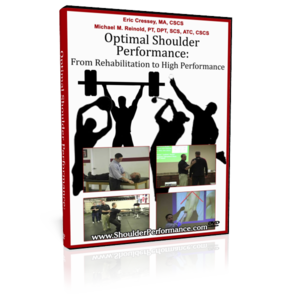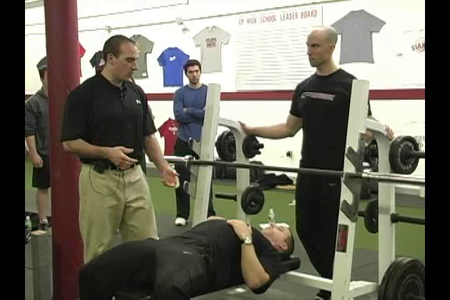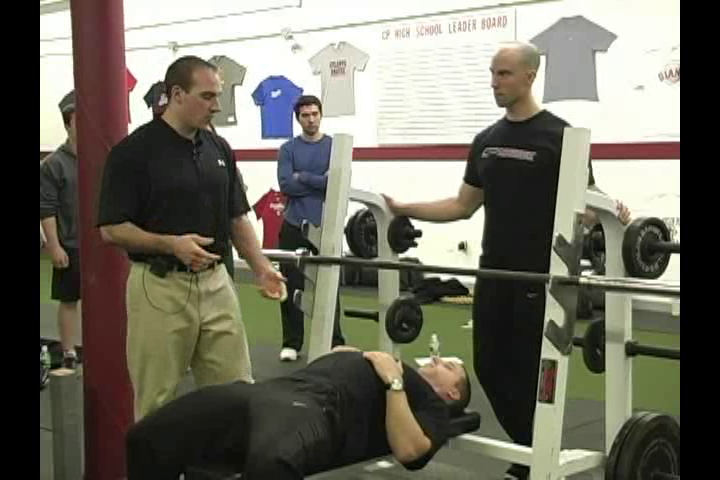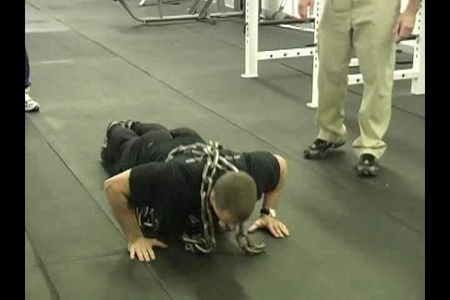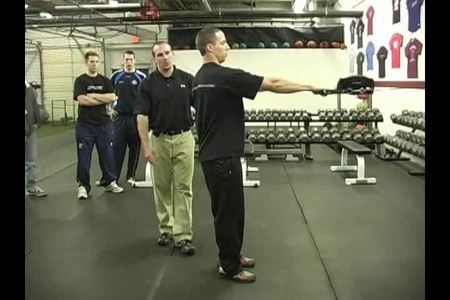Optimal Shoulder Performance 4-DVD Set (2011)
DVD-Rip (4 DVD Set) | AVI | DivX MPEG4 @ 1.2 Mbit/s | 720x480 | MP3 Stereo @ 128 Kbit/s 48 KHz | 6 Hours | 3.46 GB
Genre: Shoulder Pathologies, Shoulder Exercises, Health, Instructional | Label: shoulderperformance.com | Language: English
DVD-Rip (4 DVD Set) | AVI | DivX MPEG4 @ 1.2 Mbit/s | 720x480 | MP3 Stereo @ 128 Kbit/s 48 KHz | 6 Hours | 3.46 GB
Genre: Shoulder Pathologies, Shoulder Exercises, Health, Instructional | Label: shoulderperformance.com | Language: English
Optimal Shoulder Performance spans the continuum from research to practical applications. In this 4-DVD set, you’ll find: DVD 1: Introduction (Cressey/Reinold), Inefficiency vs. Pathology (Cressey), Physical Examination of Specific Shoulder Pathologies (Reinold), DVD 2: Training the Injured Shoulder During- and Post-Rehabilitation (Cressey), The Scientific & Clinical Rationale Behind Shoulder Exercises (Reinold), DVD 3: Movement Quality Assessment and Corrective Exercise (Cressey), Special Tests to Differentiate Specific Shoulder Pathologies (Reinold), DVD 4: Resistance Training Strategies and Techniques (Cressey), Integrating Manual Techniques and Principles of Dynamic Stability (Reinold).
Optimal Shoulder Performance spans the continuum from research to practical applications. In this 4-DVD set, you’ll find:
DVD 1: Introduction (Cressey/Reinold), Inefficiency vs. Pathology (Cressey), Physical Examination of Specific Shoulder Pathologies (Reinold)
You’ll Learn:
Why the collaboration between rehabilitation specialists and fitness professionals is essential for both patient/client outcomes and the continued growth and professional development of both fields.
Why just about every client or athlete you encounter will have a HUGE red flag – at least in the context of the traditional medical model.
Why diagnostic imaging like MRIs and x-rays are just one piece of a diagnostic puzzle that should include specific movement evaluations.
The difference between tendinosis and tendinitis – and it is an important difference!
How the Law of Repetitive Motion applies to the shoulder.
Why identical injuries may have different causes, and different injuries may have identical causes!
The difference between active and passive restraints, and how the two work together in the shoulder.
The different types of pathology we commonly see at the shoulder.
The differences between impingement and rotator cuff tears
What total motion is and why it’s important
Whether the posterior capsule has a role in the loss of shoulder internal rotation in overhead throwing athletes
The remarkable adaptations in the throwing shoulder
Why you should never work through a shrugging pattern
The mechanisms of injury for superior labrum anterior-posterior (SLAP) lesions and their different classifications.
DVD 2: Training the Injured Shoulder During- and Post-Rehabilitation (Cressey), The Scientific & Clinical Rationale Behind Shoulder Exercises (Reinold)
You’ll Learn:
The differences between external impingement and internal impingement.
Why everyone has “shoulder impingement” – to some degree.
Programming and technique modifications to maintain a training effect in spite of both kinds of impingement as well as acromioclavicular joint issues.
The specific “return to bench pressing” progression we use with our athletes.
Why true “symmetry” is an absolute myth – particularly when discussing throwing shoulders.
Why overhead lifting may not be appropriate for overhead throwing athletes such as baseball players, tennis players, and swimmers.
Why it’s important to show an athlete/client what he/she CAN do instead of just telling him/her what CAN’T be done.
The unique, specific demands placed on the throwing shoulder.
The true – but commonly misunderstood – function of the rotator cuff.
The important principles of rotator cuff rehabilitation and prehabilitation.
The safest and most effective strengthening exercises for the rotator cuff.
The impact of scapular positioning on rotator cuff function.
The “Do” and “Don’t” things for subacromial impingement, internal impingement, SLAP lesions, instability, and congenital laxity.
DVD 3: Movement Quality Assessment and Corrective Exercise (Cressey), Special Tests to Differentiate Specific Shoulder Pathologies (Reinold)
You’ll Learn:
How to effectively measure shoulder internal and external rotation.
How comprehensive screening of athletes’ upper extremity function should cover four broad categories.
10 specific assessments to use for these four categories.
25 corrective exercises to address any issues identified from these 10 assessments.
Specific coaching cues to use on all these assessments and corrective exercises.
An exact “flow chart” we use to identify movement inefficiencies before they become shoulder problems.
Components of a physical examination in a symptomatic population.
When fitness professionals should know to refer out to doctors and rehabilitation specialists.
How to quickly assess for congenital laxity.
The most effective tests for SLAP lesions, instability, and the different types of shoulder impingement.
DVD 4: Resistance Training Strategies and Techniques (Cressey), Integrating Manual Techniques and Principles of Dynamic Stability (Reinold)
You’ll Learn:
How to modify various resistance training techniques to make them more shoulder-friendly.
Strategies for increasing the difficulty of exercises without causing or exacerbating shoulder issues.
Optimal technique for everything from bench pressing variations, to push-ups, to rowing exercises.
Eric’s single-favorite upper body exercise.
Why core stability directly impacts shoulder function.
The theory behind rhythmic stabilizations and technique instruction on how to perform them.
Where rhythmic stabilization’s fit into a program.
Why manual resistance exercises warrant inclusion in programming.
Why it’s important to include both open- and closed-chain kinetic chain stabilization drills to achieve a comprehensive training effect.


